As if living in a tiny floating home wasn’t unconventional enough, the way we get around would definitely be considered alternative transportation as opposed to having a car. Our sailboat carries us long distances but sometimes it’s not practical to move the boat to get to where we need to go. It’s essential to have a kayak, dinghy or rowboat if you live on the water. We opted for an inflatable dinghy with an outboard motor.
Size and Type:

Before setting off on our journey, we scoured Craigslist for a suitable dinghy and outboard. For tropical destinations it’s ideal to buy a dinghy made of Hypalon material for its higher resistance to destructive UV rays, though we found a brand new PVC dinghy that came with a motor in unbelievably good condition. It was basically like getting the dinghy for free if you consider how much we paid for the motor so we decided we’ll just use it as long as we can and upgrade when the time comes.
The dinghy we chose is on the larger side at a whopping 12′ long, big enough for four people and two dogs, or a bunch of supplies and groceries. It’s got a removable aluminum floor so the entire thing can be deflated, rolled up and stowed down in our forward cabin if needed. It weighs only 110 lbs which makes it easy enough for two of us to maneuver it around.
The motor is a 15hp Mercury 2-stroke engine. It weighs less than a 4-stroke and has enough power to bring our 12′ dinghy up on a plane. It’s much more fuel efficient to plane up on top of the water than it is to plow through it like the smaller engines do. It’s also strong enough to carry us through rough waters and long distances. We know other cruisers that have smaller 3,5, or 8 hp engines and they can’t cross the same currents we can. Instead, they have to move their sailboat to a different location using diesel to do so.
The amount of fuel we use is about 2 gallons per week with normal activities. This is significantly less gas than we used to use on land when we owned cars.
Not an all-weather vehicle
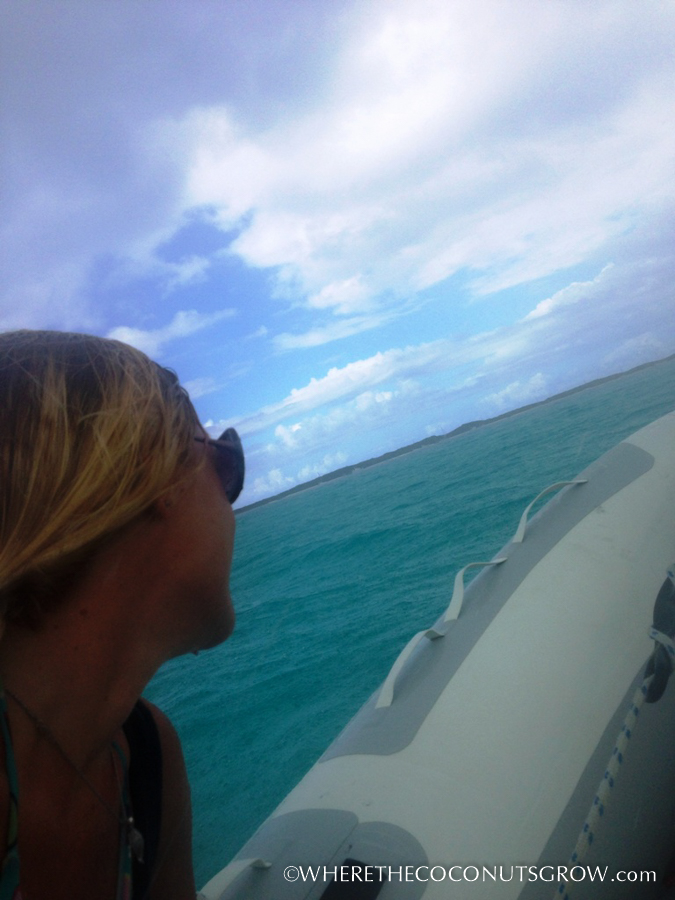
Though we can travel efficiently to where we need to go, sometimes rough seas, high winds and rain storms can make things difficult. There’s no roof on our dinghy and everything inside, including us, often gets sprayed with saltwater or soaked from rain.
If we take laundry to shore, we make sure to put the clean clothes in a dry-bag for the ride back to our boat. You never know when you might get a little liquid sunshine in the Caribbean 😉
If it’s too stormy, sometimes we just have to wait it out until the skies clear or the wind dies down. Other times, we charge through it and just shower off when we get back to the boat.
Provisioning
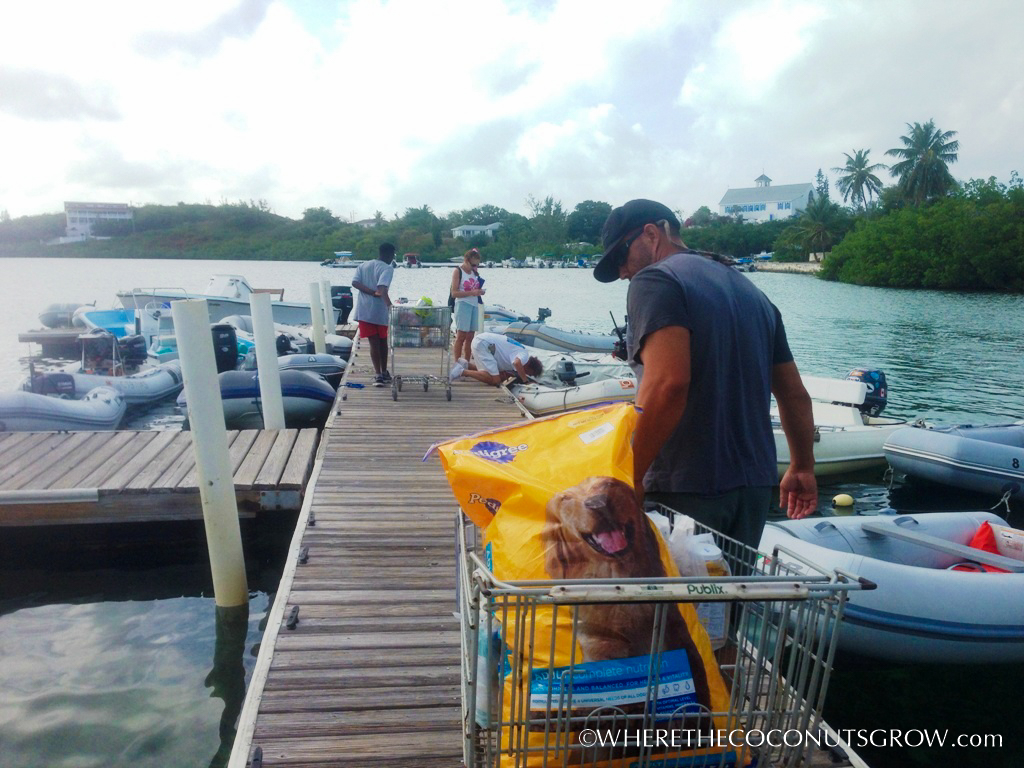
Our dinghy not only carries us to and from shore, it also carries all of our supplies. When we need more food or other provisions, we have to get it all back to the boat somehow. For those that live at a dock it’s easy. For us, we have to get our supplies to our dinghy before we can motor back out to our tiny floating home. The catch is, we can only carry as much as our dinghy will hold. Yet another reason we wanted to get a 12′ dinghy instead of a 6′ dinghy, we usually have plenty of room to pile everything in.
My Favorite Part
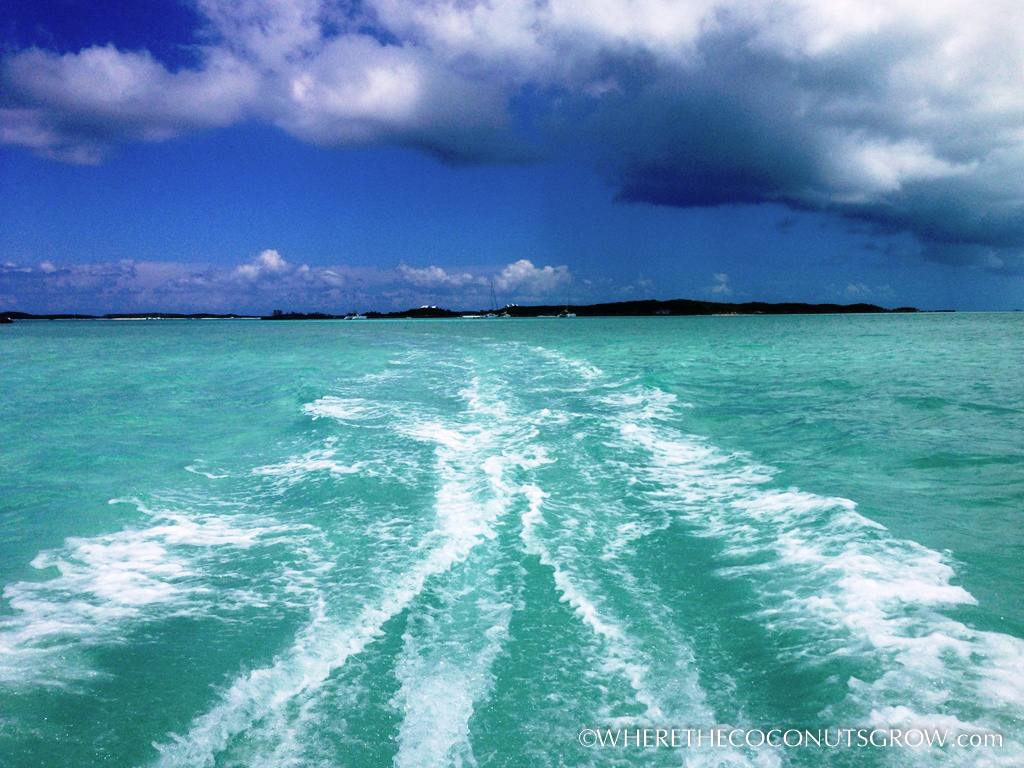
My favorite part about getting around by dinghy is that there is never any traffic! There are no roads and no lines to wait in. No one in front of you. You can go as fast as you want (except in a no-wake-zone near certain shorelines).
We still have to use caution when navigating shallow waters. If beaching the dinghy we need to tilt the motor up so sand, rocks and mud don’t interfere with the propeller and water pump. Even so, we can explore some pretty cool areas that you can’t get to on foot.
For the most part, we’re free to go wherever we want.
Maintenance / Fuel
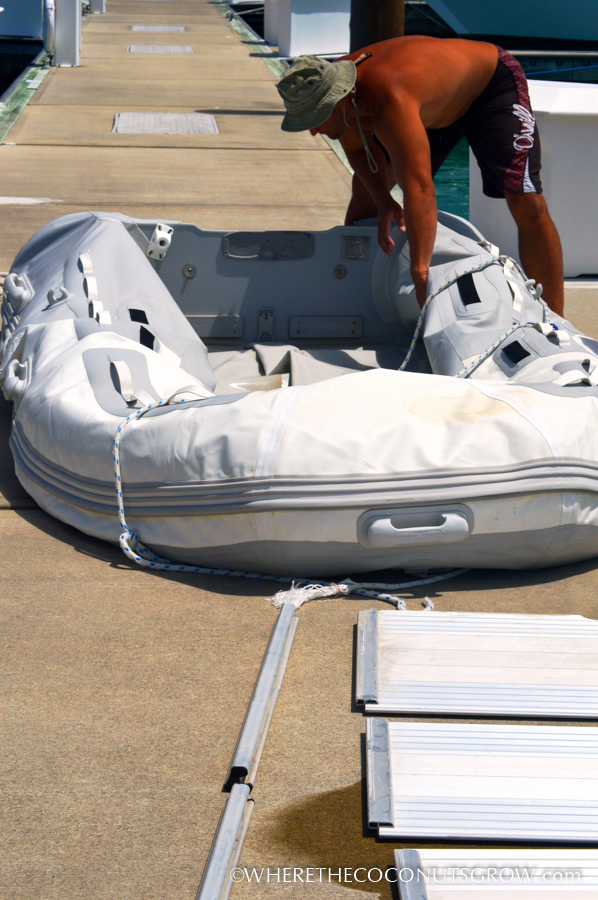
Like anything else, our dinghy requires routine maintenance. The bottom aquires marine growth which needs to be scrubbed off every few weeks. The flooring needs to be removed to clean out all the sand and small rocks from the inside maybe once or twice a year. The tubes need to be inflated every now and then.
The outboard motor requires the majority of the maintenance. There are quite a few mechanical parts that fail over time and that need to be maintained. 2-stroke engines require a special oil to mix with the gasoline. The gas tank and hose has parts like the filter and hose clamps that eventually need to be replaced.
As long as we apply the same preventative maintenance to our dinghy that we do for our sailboat, it remains a very reliable and economic mode of transportation.
Not In Use
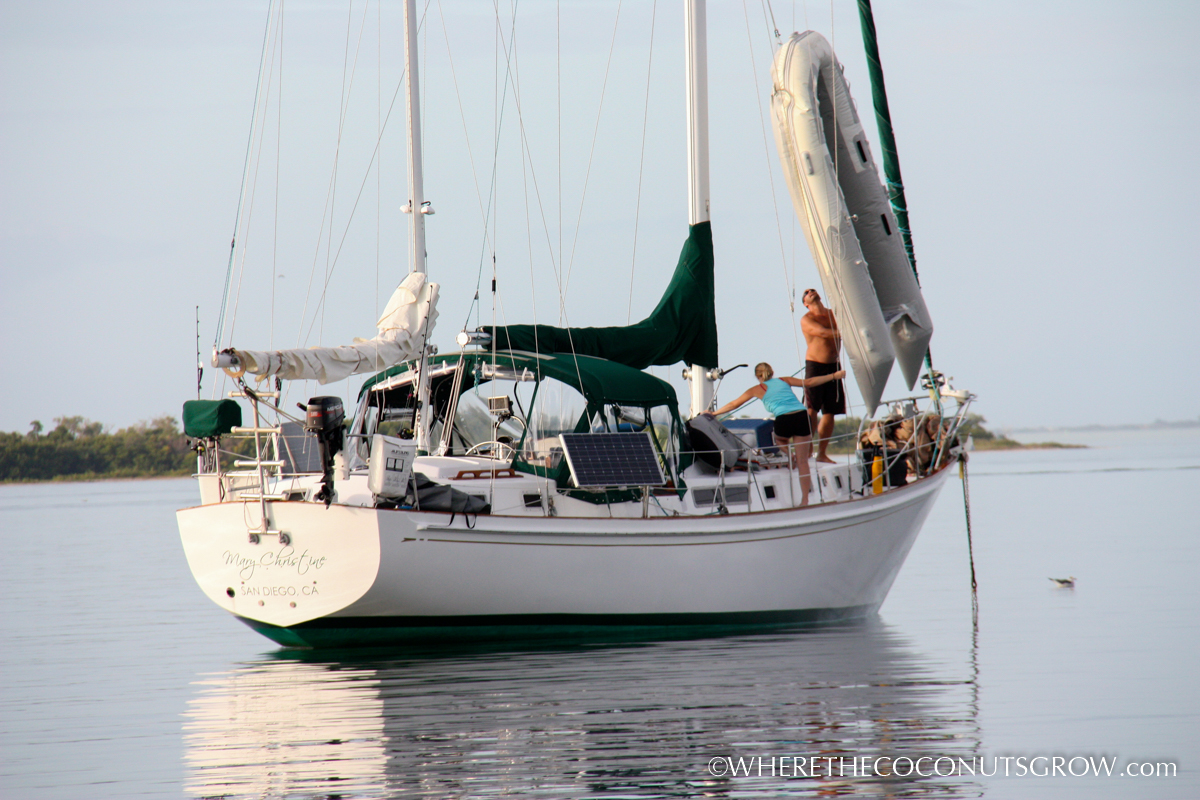
On long passages, the dinghy is hoisted up onto the bow of our sailboat and strapped down. This eliminates unnecessary drag that would be caused by towing it behind the boat. We use a halyard and winch it up over the lifelines.
For shorter day sails in calm weather, we simply tilt the motor up and tow it behind us. It usually doesn’t pose any concerns. If we anticipate rough weather, we’ll at least bring the motor up on deck, secure it to the railing, and tow the dinghy behind.
In some countries, dinghy theft is a real problem so we lock everything up with a heavy-duty chain and weatherproof lock. The lock needs to be treated with a corrosion blocker or otherwise we’ll find that the marine environment has seized up our lock making it difficult for us to get home.
Limitations
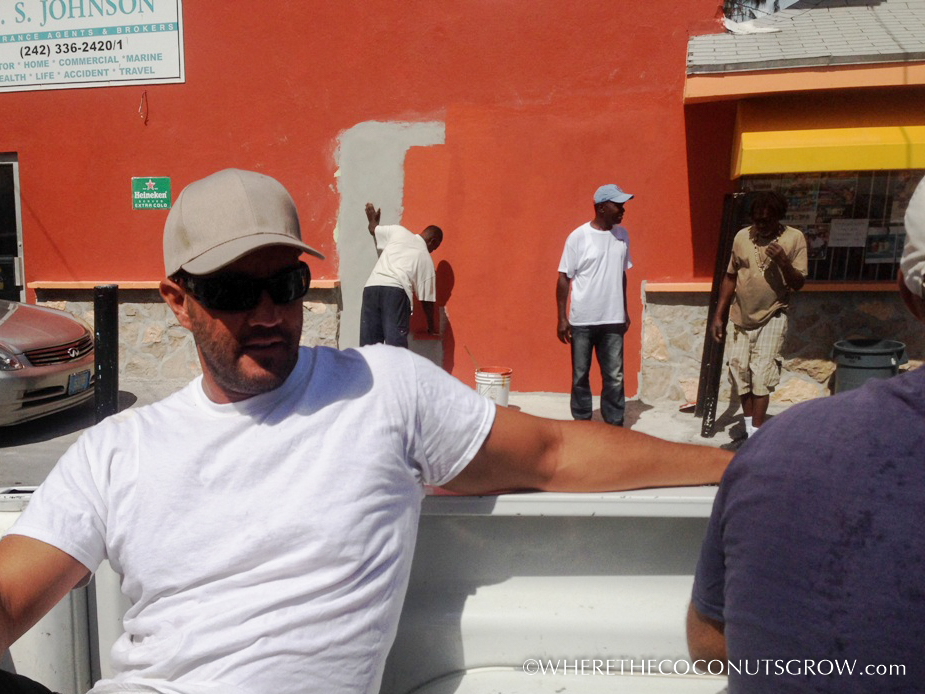
A dinghy can only get us from our boat to the water’s edge. Usually we can get close to the right part of town, but it only works on the water. Once on land, we usually walk to where we need to go. Sometimes we use the local bus system. In most Caribbean countries it’s socially acceptable to hitchhike. Most locals are more than willing to give you a ride where you need to go, even if you’re lugging around a propane tank with you!
Fun
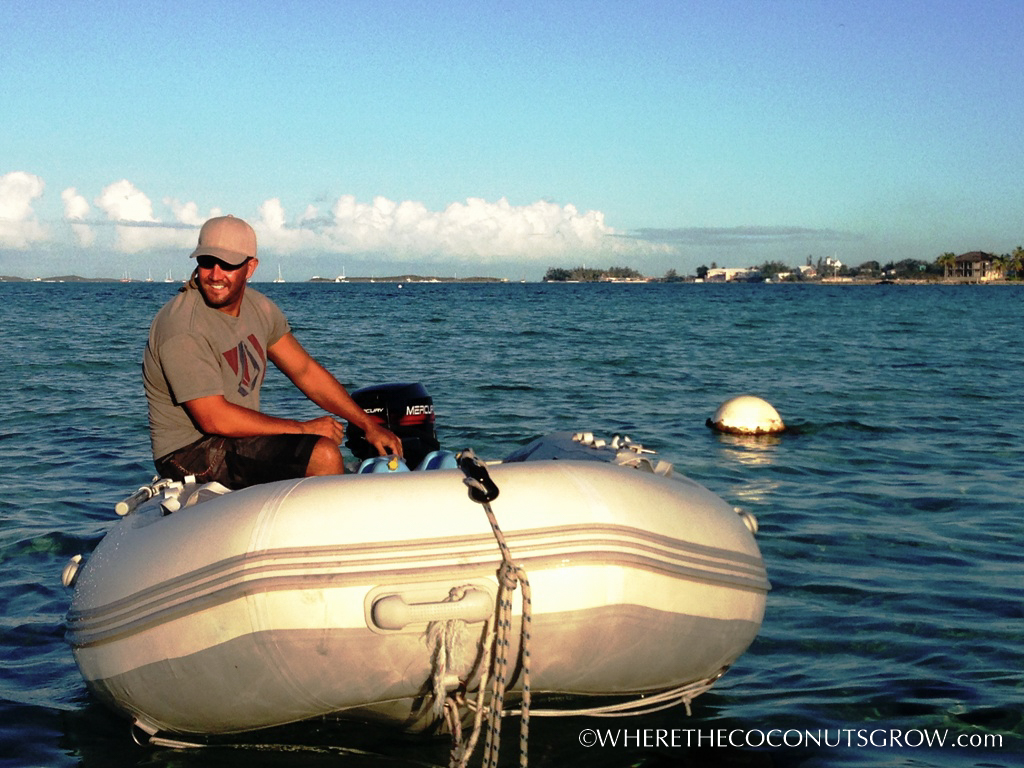
Our dinghy is also helpful to carry gear for fun things like surfing, diving, fishing, kiteboarding or any other water sports. Our lives revolve around the water and this is definitely the most practical means of transportation for us, even though it may seem unusual to others.
What is your primary mode of transportation?
By Jody Pountain for the [Tiny House Blog]

Nice Furniture ???
Interesting to see your story on inflatables. I have designed. built, sold and serviced every mfg that makes them in mfg more than 100 a year. PVC coated material is the worst material possible. It starts to get brittle from the second the fabric is made. It’s called “out gassing”. It’s what makes your new car smell new. This stuff is not only toxic but has a known half life that gets shorter by an order of magnitude as you get closer to the equater! UV is just too strong now and getting stringer. It just cooks the tubes.
My advice here is;
1. Use Graigslist AND Boat Trader for sure but also walk the sailboat docks, some great deals to be had from those who need to sell.
2. When the dingy is “free” with a motor and trailer etc SELL IT ON THE SPOT! Because that PVC will just fail one day when you need the boat…….in the middle of nowhere. They give way like a rusted hull at the bottom when she gives it up! They can even POP!!!!
3. If you buy used try to find a Avon. – still the best out there even after Zodiac……
4. It’s worth it, if you are crusing , to buy NEW! Warranty issues can be dealt with worldwide if you buy Avon( still being built but NOT exported to the U.S. Anymore— very long sad story) or AB. DONT BUY A ZODIAC WHAT EVER YOU DO—-note; this is personal opinion not a corporate slam-( they love to sue the truth like Monsanto) Be carful with Caribe and the other Carribbean built products under both brand names and store brand names but are really the same product like cereal boxes at the store, they have no good support or ability in my experience. They pro rate your warranty -not full replacement EVER!
5. If you find a good price on a nice used hypalon boat that costs you less than your budget amount;
BUY A EPIRB AND A LIFERAFT!!!!!! Please ;>}~
One more thing, sorry. In the used market there are a lot of RIB ( Rigid Hull Inflatable) boats for sale used that were built in South Florida and in Venezuela that sold as high end yacht tenders. These are great boats. Watch the white ones for staining and mildew issues. Won’t name the companies , many out of business now or bought by others but a GOOD repair shop can do just about anything if the tubes are Hypolon!!!!!